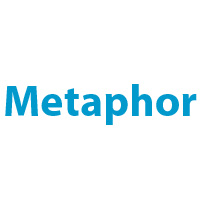What is Metaphor?
Metaphor is a figure of speech more especially a trope which uses a comparison or descriptive term for a person or a thing to which it is not literally applicable. It differs from simile only in omitting the comparative word. Metaphors have more flexible and economical expressive power than similes.

The image used to represent or “figure” something else is known as the vehicle of the metaphor; the thing represented is called the tenor. For instance, in the sentence “That child is a mouse,” the child is the tenor, whereas the mouse is the vehicle. The image of a mouse is being used to represent the child, perhaps to emphasize his or her timidity.
The metaphor should be distinguished from simile, another figure of speech with which it is sometimes confused. Similes compare two unlike things by using a connective word such as like or as. Metaphors use no connecting word to make their comparisons. Furthermore, critics ranging from Aristotle to I.A. Richards has argued that metaphors equate the vehicle with the tenor instead of simply comparing the two.
Whenever there is more than one metaphor in a context, we should see how they are interrelated. The thread of connection of meaning may spread throughout the whole poem and in relation to the particular context. So, ready-made response will not do, but a tactful, skillful and effortful analysis is demanded.
Metaphors that have become part of ordinary speech are called dead metaphors. But poetic metaphors are usually original, playful and multiple in meaning. So, they must be interpreted with full attention to the particular context and connotations. A mixed metaphor exists when more than one vehicle is used to represent the same tenor. What makes this type of metaphor truly “mixed” is the presence of multiple – and very different- vehicles.
Published on 17 Nov. 2013 by Kedar Nath Sharma
